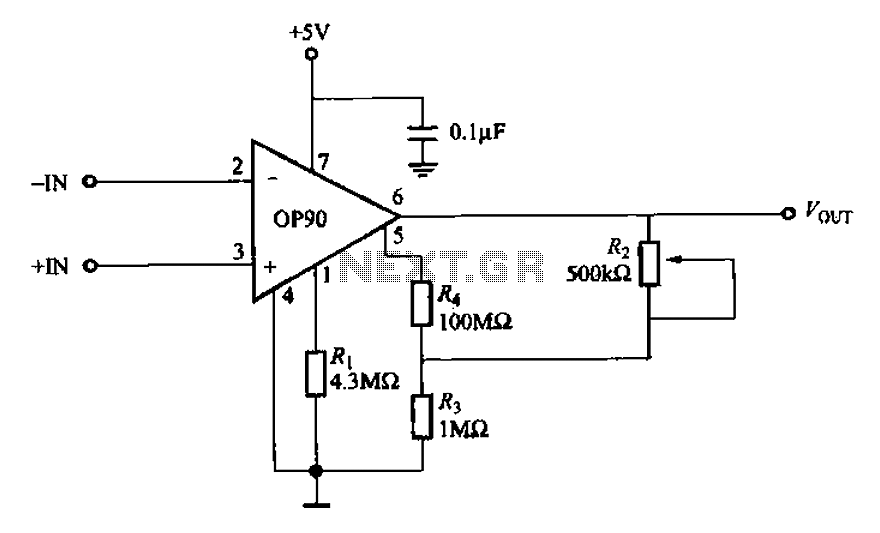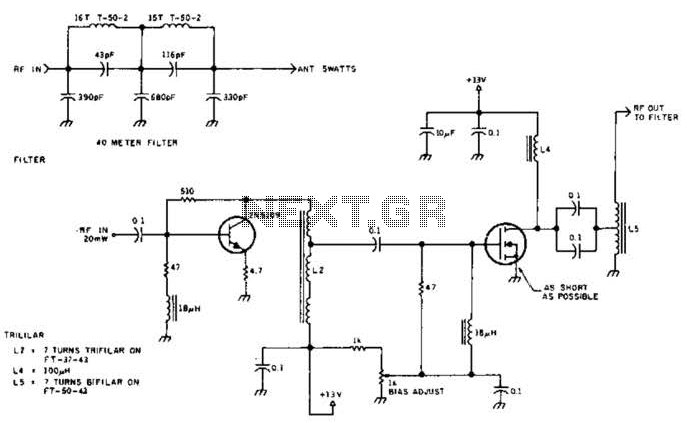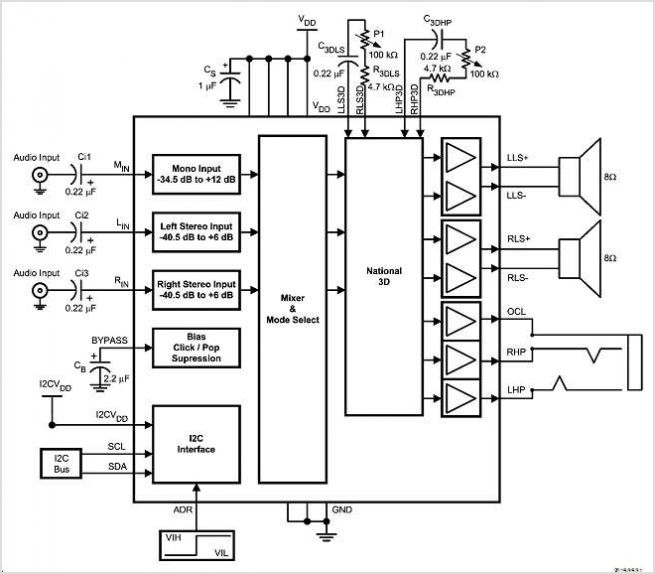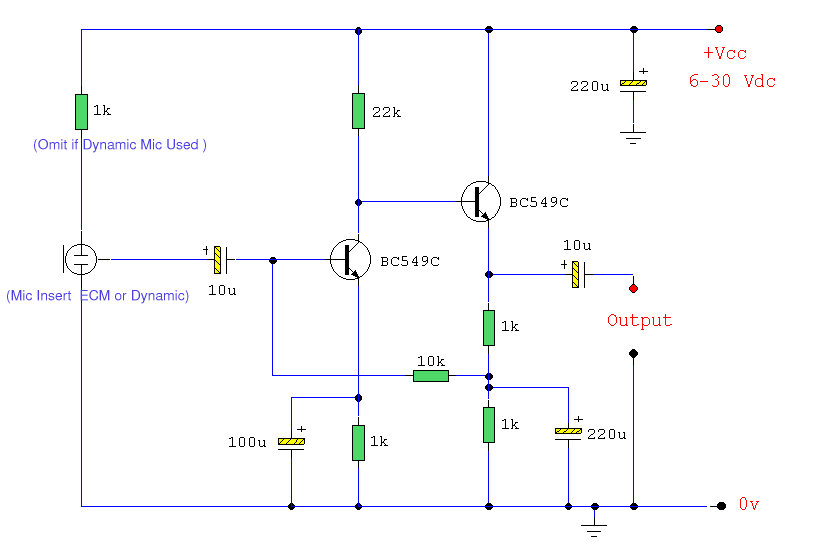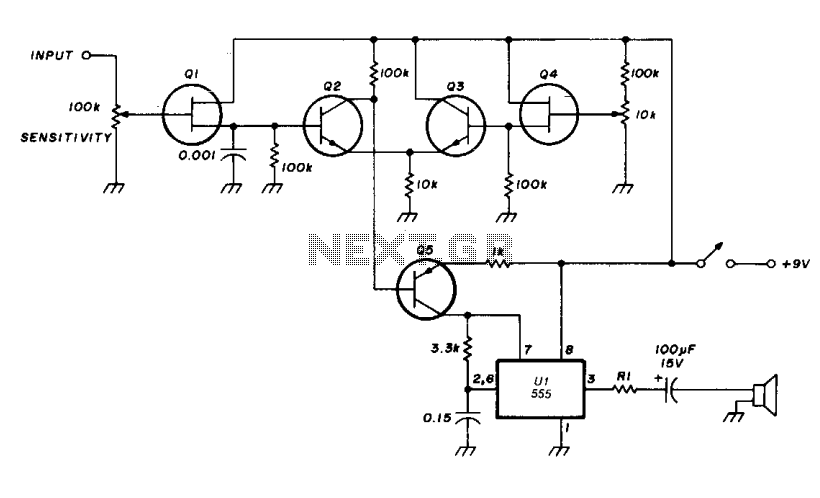
10 W Audio Amplifier

This circuit is a general-purpose 10-W audio amplifier designed for moderate-power public address (PA) systems or as a modulator in an AM transmitter. By applying higher voltages and adjusting the bias resistors, it is possible to achieve output power levels of up to 30 W. The output stage of the amplifier employs the transistors 2N3055 and MJE2055.
The described audio amplifier circuit serves as a versatile solution for applications requiring moderate audio power amplification. The primary components, 2N3055 and MJE2055, are robust power transistors well-suited for handling significant output currents and voltages, making them ideal for audio amplification tasks.
The circuit's design typically includes a power supply stage that provides the necessary voltage levels for the transistors to operate efficiently. The 2N3055 transistor functions as the main output device, capable of delivering substantial power to the load, while the MJE2055 can be used for driving the output stage or as a complementary push-pull configuration to enhance performance and reduce distortion.
Biasing is critical in this circuit to ensure that the transistors operate in their optimal range. By adjusting the bias resistors, the quiescent current can be set appropriately, which affects the linearity and efficiency of the amplifier. Higher voltage operation can be achieved by selecting a suitable power supply, allowing for increased output power while maintaining sound quality.
The circuit may also incorporate additional components such as capacitors for coupling and decoupling, resistors for feedback and stability, and possibly a heat sink for thermal management of the output transistors. Overall, this audio amplifier circuit is designed to provide reliable performance in various audio applications, making it a valuable tool for both amateur and professional audio engineers.This circuit is a general-purpose 10-W audio amplifier for moderate-power PA or modulator use in an AM transmitter. With higher voltages and a change in bias resistors, up to 30 W can be obtained. The Output Stage Amplifier using transistor 2N3055 and MJE2055. 🔗 External reference
The described audio amplifier circuit serves as a versatile solution for applications requiring moderate audio power amplification. The primary components, 2N3055 and MJE2055, are robust power transistors well-suited for handling significant output currents and voltages, making them ideal for audio amplification tasks.
The circuit's design typically includes a power supply stage that provides the necessary voltage levels for the transistors to operate efficiently. The 2N3055 transistor functions as the main output device, capable of delivering substantial power to the load, while the MJE2055 can be used for driving the output stage or as a complementary push-pull configuration to enhance performance and reduce distortion.
Biasing is critical in this circuit to ensure that the transistors operate in their optimal range. By adjusting the bias resistors, the quiescent current can be set appropriately, which affects the linearity and efficiency of the amplifier. Higher voltage operation can be achieved by selecting a suitable power supply, allowing for increased output power while maintaining sound quality.
The circuit may also incorporate additional components such as capacitors for coupling and decoupling, resistors for feedback and stability, and possibly a heat sink for thermal management of the output transistors. Overall, this audio amplifier circuit is designed to provide reliable performance in various audio applications, making it a valuable tool for both amateur and professional audio engineers.This circuit is a general-purpose 10-W audio amplifier for moderate-power PA or modulator use in an AM transmitter. With higher voltages and a change in bias resistors, up to 30 W can be obtained. The Output Stage Amplifier using transistor 2N3055 and MJE2055. 🔗 External reference
